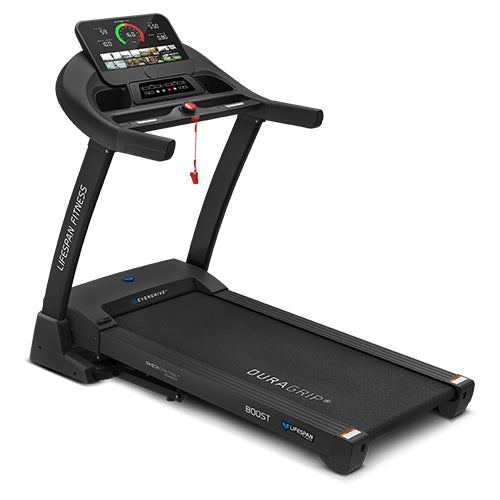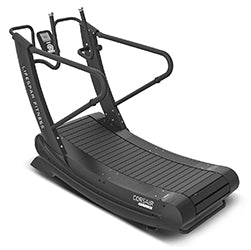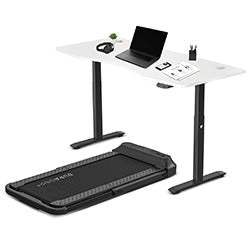

Weight training is a great way to target and strengthen various muscle groups throughout the body. Regular weight training can significantly enhance overall health and well-being by improving muscular endurance, bone density and metabolic function. It promotes better posture, joint stability, and injury prevention by strengthening muscles around joints. Weight training also contributes to increased calorie expenditure, aiding in weight management and fat loss.
By incorporating different exercises and equipment, you can work on muscles in your arms, chest, back, core and legs. For instance, dumbbell training can significantly enhance muscle definition and strength across these areas.
Here, we'll unpack the muscles you can target with weight training and how to make the most out of your weight workout.
Upper body muscles

Weight training includes many effective exercises to target key upper body muscle groups, including the chest, back, shoulders and arms. For the chest, exercises like bench presses and chest flyes help build strength and definition in the pectoral muscles. Back muscles, including the lats and traps, benefit from workouts such as pull-ups and rows, which enhance posture and overall back strength. Shoulder muscles can be developed through overhead presses and lateral raises, improving shoulder stability and mass.
Arm muscles, including the biceps and triceps, are targeted with exercises like bicep curls and tricep dips, promoting arm strength and definition.
Core Muscles

Core muscles are vital for stabilising the body and supporting overall strength and mobility. Key muscle groups include the abdominals, which are crucial for core stability. Dumbbell exercises like renegade rows and woodchoppers engage multiple muscle groups, including the abdominals and obliques, while promoting stability and coordination. Barbell rollouts and landmine twists challenge core stability and control through dynamic movements that extend and rotate the torso. Cable crossover exercises such as Pallof presses and woodchoppers provide continuous resistance throughout the range of motion, enhancing core strength and endurance.
Incorporating these exercises into a balanced weight training regimen not only improves core strength and stability but also enhances posture and reduces the risk of injury during physical activities. Adjusting intensity and incorporating variety ensures comprehensive development of core muscles, supporting overall fitness goals and functional movement patterns.
Lower body muscles

Weight training offers a variety of exercises to effectively target and strengthen key lower body muscle groups, including the quadriceps, hamstrings, glutes and calves. The quadriceps, responsible for knee extension, benefit from exercises like barbell squats, lunges and leg presses, which promote muscle growth and strength. Hamstring muscles, crucial for knee flexion and hip extension, are targeted through deadlifts, hamstring curls and glute-ham raises, enhancing both strength and flexibility. Gluteal muscles, essential for hip stability and power, are engaged with exercises such as hip thrusts, squats and lunges, contributing to overall lower body strength and shape. Calf muscles can be strengthened and defined with weighted calf raises and variations, supporting improved muscle endurance and lower leg function.
Building a Workout Program

Creating an effective workout program involves several key considerations to ensure balanced muscle development and overall fitness progress. First, incorporate a variety of exercises that target different muscle groups to avoid overtraining and promote overall strength. For instance, include compound movements like squats and deadlifts, which engage multiple muscles simultaneously, alongside isolation exercises such as bicep curls and tricep extensions to target specific areas. Secondly, consider different workout splits to organise your training sessions effectively. Common splits include full-body workouts, upper/lower body splits, or specific muscle group splits (e.g., chest and triceps, back and biceps). This approach allows for adequate rest and recovery between sessions while maximising muscle stimulation. Lastly, tailor your program to best target muscle groups based on your fitness goals and preferences. Make sure to adjust weights and repetitions accordingly to challenge yourself progressively and avoid plateauing.
Conclusion

Building a well-rounded workout program through weight training is crucial for achieving fitness goals effectively. By incorporating a variety of exercises that target different muscle groups, you can ensure comprehensive muscle development and overall strength improvement. It's essential to consider different workout splits, such as full-body workouts or split routines focusing on specific muscle groups, to optimise training efficiency and allow for adequate recovery.
Customising your program to target specific muscle groups based on personal goals enhances the effectiveness of each session and promotes continuous progress. For more detailed insights into enhancing your weight training routine, including comparisons between cable machines and free weights, visit Cable Machine vs. Free Weights and learn how to utilise a cable crossover machine effectively with our guide on How to Use a Cable Crossover Machine. These resources offer valuable information to further refine your training techniques and maximise your fitness journey.


















































